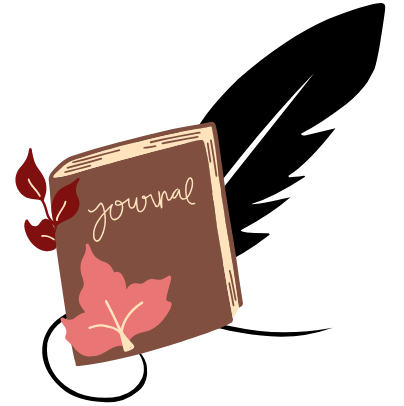As an 8th grade English teacher, I’ve seen firsthand how the right writing prompt can transform a reluctant writer into an enthusiastic storyteller. Creative writing prompts offer more than just a cure for writer’s block – they provide a gateway for students to explore their imaginations, develop critical thinking skills, and express themselves authentically.
For 13 and 14-year-olds navigating the complexities of adolescence, well-crafted prompts create a safe space to grapple with emerging identities, process complicated emotions, and make sense of an increasingly nuanced world. Here’s the power of prompts and how we can craft exercises that truly resonate with 8th grade students.
The Magic of an Effective Prompt
The best writing prompts for 8th graders strike a delicate balance. They provide enough structure to spark ideas while leaving plenty of room for personal interpretation and creativity.
Effective prompts often:
- Tap into themes relevant to young teens (friendship, identity, family dynamics)
- Introduce fantastical elements that encourage imaginative thinking
- Present moral dilemmas or opportunities to explore different perspectives
- Engage the senses and emotions
Consider this prompt: “Write a story about a character who discovers they can hear other people’s thoughts, but only when those thoughts are kind.”
This prompt works on many levels. It introduces a supernatural ability (mind-reading) but ties it to a relatable concept (kindness).
Students must consider the nature of thoughts, the impact of kindness, and the potential consequences of such a power.
The prompt invites rich character development and plot possibilities.
Crafting Prompts That Speak to 8th Graders
When designing prompts for this age group, we must consider their developmental stage. Eighth graders are:
- Exploring their place in the world
- Questioning authority and established norms
- Developing more nuanced views of right and wrong
- Highly receptive to sensory input
Prompts that allow students to grapple with moral ambiguity or step into another’s perspective can be particularly engaging. For example:
“Write a story from the point of view of the ‘villain’ in your favorite fairy tale. What’s their side of the story?”
This prompt challenges preconceptions, develops empathy, and allows students to play with familiar narrative structures. It makes use of their growing ability to see shades of gray in formerly black-and-white situations.
Sensory prompts can also yield vivid, emotionally resonant writing. Try something like:
“Describe a place that smells like your childhood. What memories and feelings does this scent evoke?”
This type of prompt engages many senses, encourages reflection on personal experiences, and often produces deeply meaningful pieces of writing.
Implementing Prompts in the Classroom
The way we present and use prompts significantly impacts their effectiveness. Here’s a step-by-step approach to maximize their potential:
- Set the stage: Create a relaxed, judgment-free atmosphere.
I like to dim the lights, play soft instrumental music, and start with a brief mindfulness exercise to help students center themselves.
- Present the prompt: Write it on the board or project it.
Read it aloud, allowing students time to fully absorb the concept.
- Brainstorm: Give students 3-5 minutes to jot down initial ideas or associations.
Encourage them to write without censoring themselves – no idea is too silly or “wrong” at this stage.
- Write: Set a timer for 10-15 minutes of uninterrupted writing time.
Emphasize that spelling, grammar, and “perfection” don’t matter during this first draft phase.
The goal is simply to get ideas flowing onto the page.
- Share: Invite volunteers to read their work aloud.
Foster a supportive environment where peers offer constructive feedback.
I often use a “two stars and a wish” format – two specific things they liked and one suggestion for improvement.
- Reflect: Ask students to consider what they learned about themselves or their writing through this exercise.
This metacognitive step helps solidify the learning experience.
Overcoming Common Challenges
Even with well-crafted prompts, students may encounter obstacles. Here are some common issues I’ve encountered and strategies to address them:
The Blank Page Paralysis
Some students freeze when faced with a prompt. To combat this:
- Encourage stream-of-consciousness writing for the first minute or two
- Have them draw a quick sketch related to the prompt to get visual ideas flowing
- Provide a “sentence starter” they can use to begin their piece
The “I’m Done” Syndrome
Students who finish quickly often miss out on deeper exploration. To challenge these writers:
- Ask them to add specific sensory details to their piece
- Encourage them to develop character backstories
- Have them consider alternative endings or “what if” scenarios to extend their story
The Perfectionist’s Dilemma
Some students get stuck trying to craft the perfect sentence. Remind them that first drafts are meant to be messy.
Editing comes later.
To help perfectionists loosen up:
- Set very short timed writing sprints (2-3 minutes) to force quick, imperfect writing
- Have them write with their non-dominant hand for a few minutes
- Encourage them to write as fast as they can without lifting their pen from the paper
The “I Can’t Relate” Resistance
If a student claims they can’t connect with a prompt, encourage them to adapt it. Ask:
- How could you change the prompt to make it more relevant to your experiences?
- What if the main character was someone completely different from you? How would their perspective change the story?
- Can you think of a movie, book, or TV show with a similar theme? How could you use that as inspiration?
Adapting Prompts for Different Learning Styles
Remember that not all students process information in the same way. To reach a wider range of learners, consider incorporating:
Visual prompts: Use images, paintings, or photographs as starting points for stories. You might show a mysterious door and ask students to describe what lies behind it.
Auditory prompts: Play short sound clips or pieces of music and have students write about what they hear. What story does this song tell?
Kinesthetic prompts: Bring in a box filled with various objects. Have students choose one at random and write a story where that object plays a crucial role.
This hands-on approach can be particularly engaging for students who learn best through touch and movement.
Building on Basics: From Prompts to Polished Pieces
While prompts are excellent for generating ideas and practicing specific skills, the ultimate goal is to help students develop their writing abilities more broadly. Here’s how to use prompts as stepping stones to more complex writing:
Theme Development
After several prompt exercises on related themes (e.g., friendship, courage, identity), challenge students to write a longer piece that explores one of those themes in depth. This allows them to synthesize ideas from many shorter exercises into a more cohesive work.
Character Building
Use a series of prompts to develop a single character over time. Students can then use this well-rounded character in a longer narrative.
Prompts might include:
- Describe your character’s earliest memory
- Write a scene showing how your character reacts to disappointment
- What is your character’s biggest fear, and why?
World-Building
Prompts that focus on setting details can be compiled to create a rich, fully-realized world for a longer work of fiction. Have students keep a “world-building journal” where they collect descriptions, maps, and cultural details of their imaginary setting.
Genre Exploration
Use prompts to experiment with different genres, then have students choose their favorite to develop into a more substantial piece. This might include:
- Writing a spooky story opener
- Crafting a sci-fi technology description
- Creating a fairy tale with a modern twist
Exercises to Reinforce Learning
To further develop students’ writing skills and creativity, try these engaging exercises:
Prompt Chain
Start with a simple prompt. Each student writes for five minutes, then passes their paper to the next person, who continues the story based on a new prompt. Repeat several times. This exercise encourages flexibility in thinking and adapting to new narrative directions.
Prompt Remix
Provide three unrelated prompts. Challenge students to incorporate elements from all three into a single coherent story.
This exercise develops their ability to make unexpected connections and blend diverse ideas.
Prompt Expansion
Begin with a simple one-sentence prompt. Each day, add a new element or twist, building a complex narrative over time. This helps students develop longer, more intricate stories and practice sustained writing over many sessions.
Real-World Connections
Have students find news articles and create prompts based on them, exploring how real events can inspire fiction. This exercise helps students see the connections between current events and creative writing, encouraging them to draw inspiration from the world around them.
The Impact of Creative Writing on 8th Grade Development
Engaging in regular creative writing exercises offers many benefits for 8th grade students:
Emotional Intelligence: Writing from different perspectives helps students develop empathy and understand complex emotions.
Critical Thinking: Crafting stories requires students to consider cause and effect, make logical connections, and solve problems creatively.
Self-Expression: Creative writing provides a healthy outlet for processing feelings and experiences during a time of significant personal growth.
Language Skills: Regular writing practice naturally improves vocabulary, grammar, and overall communication abilities.
Confidence: Sharing their work and receiving positive feedback builds self-esteem and a sense of accomplishment.
Integrating Technology with Writing Prompts
While traditional pen-and-paper writing stays valuable, incorporating technology can add new dimensions to creative writing exercises:
Digital Storytelling: Use tools like Storybird or Canva to create illustrated stories based on prompts.
Collaborative Writing: Platforms like Google Docs allow students to work together on group stories in real-time.
Podcasting: Have students record their stories as audio narratives, adding sound effects and music.
Social Media Inspired Prompts: Create writing exercises based on tweet-length stories or Instagram caption challenges.
Celebrating Student Work
Recognizing and sharing student writing is crucial for building confidence and motivation. Consider these ideas:
Class Anthology: Compile the best pieces from various prompts into a class book.
Writing Wall: Dedicate a bulletin board to displaying exemplary student work.
Open Mic Days: Host regular sessions where students can voluntarily share their writing with the class.
School Literary Magazine: Work with other teachers to create a school-wide publication featuring student writing.
Addressing Sensitive Topics Through Writing
8th grade is a time when students may be grappling with serious issues. While it’s important to maintain suitable boundaries, writing can provide a safe outlet for exploring difficult topics.
When using prompts that might touch on sensitive subjects:
- Provide clear guidelines about what is and isn’t suitable for school writing
- Offer alternative prompts for students who may be uncomfortable
- Be prepared to provide resources or support if a student’s writing reveals concerning information
Encouraging Revision and Editing
While the initial focus of prompt writing is often on generating ideas, it’s important to teach students the value of revising and editing their work. Here are some strategies:
Peer Editing Circles: Have students exchange work and provide constructive feedback to each other.
Focused Revision: Ask students to revise their piece with a specific goal in mind (e.g., adding more sensory details, strengthening the dialogue, etc.)
Read-Aloud Editing: Encourage students to read their work aloud to catch awkward phrasing or missed words.
Revision Challenges: Create fun challenges like “cut 50 words without losing meaning” or “replace 5 ordinary verbs with more vivid ones.”
Connecting Writing to Literature
Use creative writing prompts to deepen students’ engagement with the literature they’re studying. For example:
- Write a missing chapter from the novel you’re reading
- Compose a letter from one character to another
- Rewrite a scene from a different character’s perspective
- Create a prequel or sequel to a short story
Fostering a Writing Community
Building a supportive writing community in your classroom can have a profound impact on students’ enthusiasm and growth as writers. Consider:
Writing Buddies: Pair students up as long-term writing partners who regularly share and talk about their work.
Author’s Chair: Designate a special seat where students can voluntarily share their writing with the class.
Writing Clubs: Start an after-school writing club for students who want extra practice and feedback.
Guest Speakers: Invite local authors or journalists to speak to the class about their writing process.
Assessing Creative Writing
Evaluating creative writing can be challenging, as there’s often no clear “right” or “wrong” answer. Consider using rubrics that focus on:
- Originality and creativity
- Use of descriptive language and sensory details
- Character development
- Logical plot progression
- Effective use of dialogue
- Grammar and mechanics (with less weight than in formal writing assignments)
Provide specific, constructive feedback that acknowledges strengths and offers concrete suggestions for improvement.
Encouraging Writing Beyond the Classroom
Inspire students to continue writing outside of school assignments:
- Share information about youth writing contests and publications
- Encourage students to keep personal journals or blogs
- Suggest writing as a way to process emotions or work through problems
- Introduce them to NaNoWriMo’s Young Writers Program for long-form writing practice
Key Takeaways
- Effective prompts balance structure with open-endedness
- Consider students’ developmental stage when crafting prompts
- Use prompts to explore various genres and writing techniques
- Adapt prompts for different learning styles
- Build from prompts to more complex writing projects
- Create a supportive, judgment-free environment for sharing work
- Integrate technology to enhance the writing experience
- Celebrate student work through publications and sharing opportunities
- Use writing as a tool for emotional growth and self-expression
- Encourage revision and editing as part of the writing process
People Also Asked
What are good writing prompts for middle school students?
Good writing prompts for middle school students often involve relatable scenarios with a twist, such as “You wake up one morning and discover you can understand what animals are saying. What happens next?” or “Write about a day in the life of your favorite object in your room.”
How can I improve my child’s creative writing skills?
To improve your child’s creative writing skills, encourage daily reading, provide diverse writing prompts, create a designated writing space at home, and offer positive feedback on their work. Consider enrolling them in writing workshops or clubs for additional practice and peer interaction.
What are the 5 types of writing prompts?
The five main types of writing prompts are:
- Narrative prompts (tell a story)
- Descriptive prompts (paint a picture with words)
- Expository prompts (explain or inform)
- Persuasive prompts (argue a point)
- Reflective prompts (analyze personal experiences or feelings)
How do you write a good hook for a story?
To write a good hook for a story, start with action, dialogue, or a surprising statement. Use vivid sensory details to immediately engage the reader’s imagination.
Pose an intriguing question or present an unusual situation that makes the reader want to know more.
What are some creative writing exercises for beginners?
Creative writing exercises for beginners include:
- Writing a story using only 6-word sentences
- Describing an everyday object without naming it
- Writing from the perspective of an inanimate object
- Creating a character based on a random photo
- Rewriting a familiar fairy tale in a modern setting




